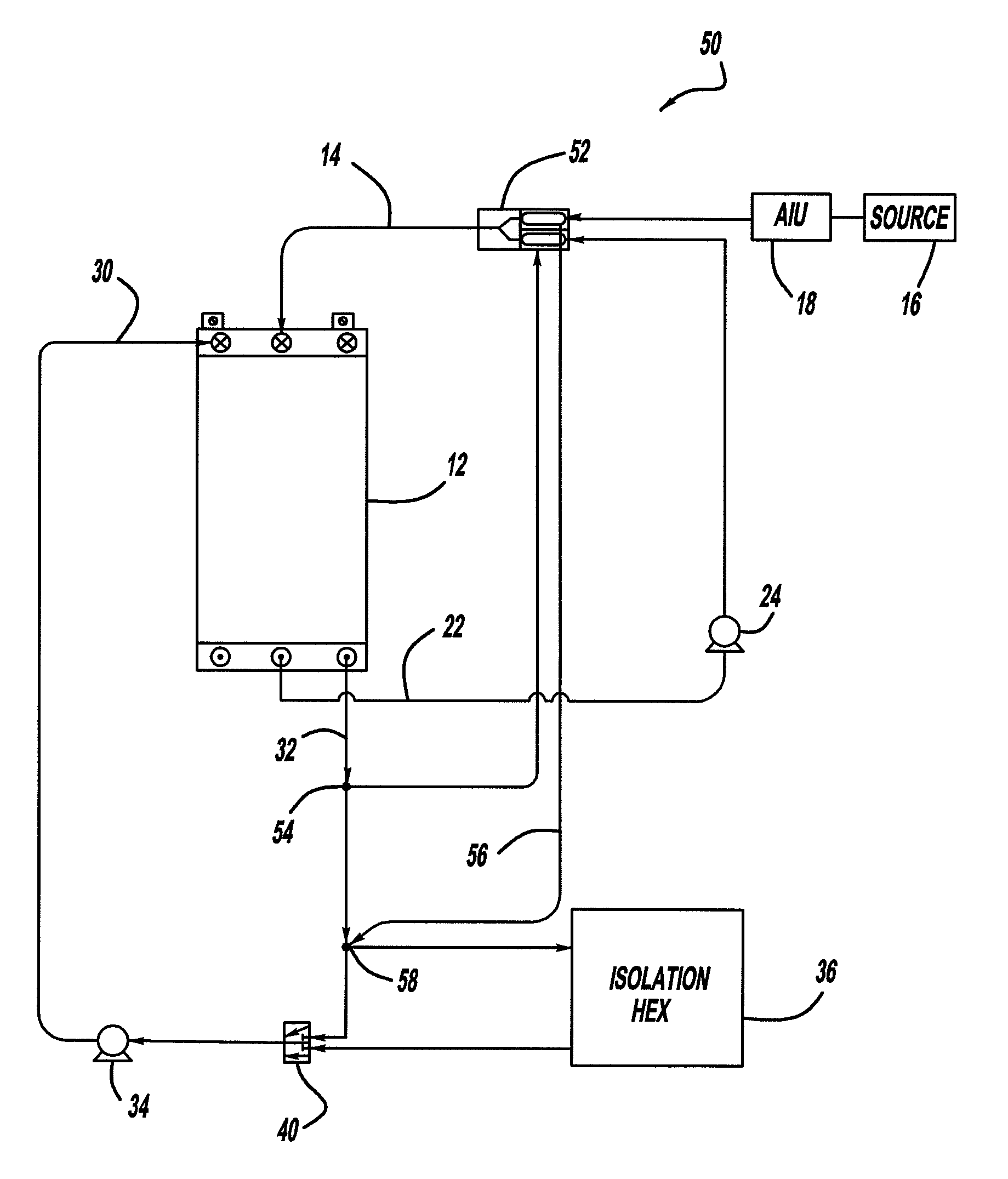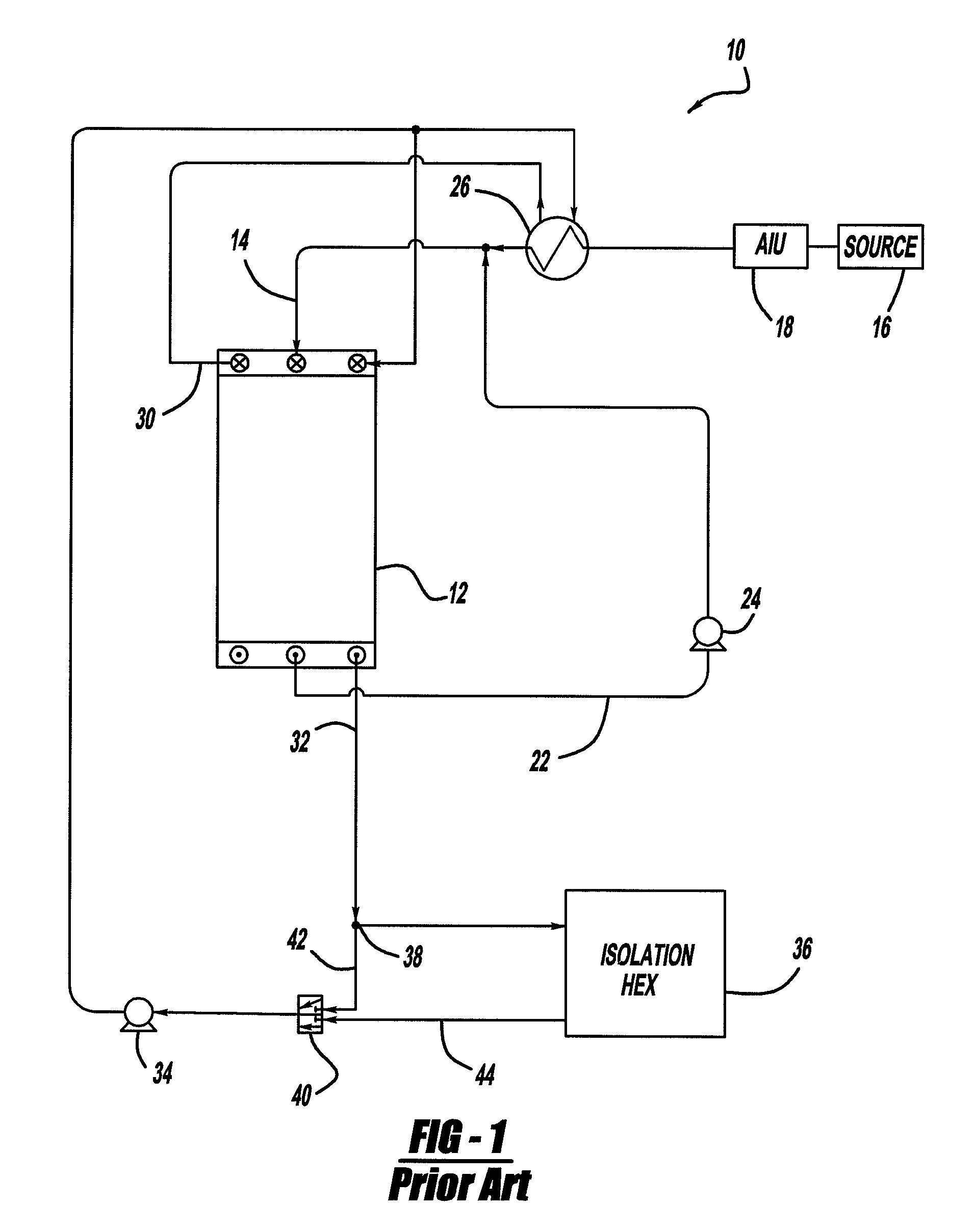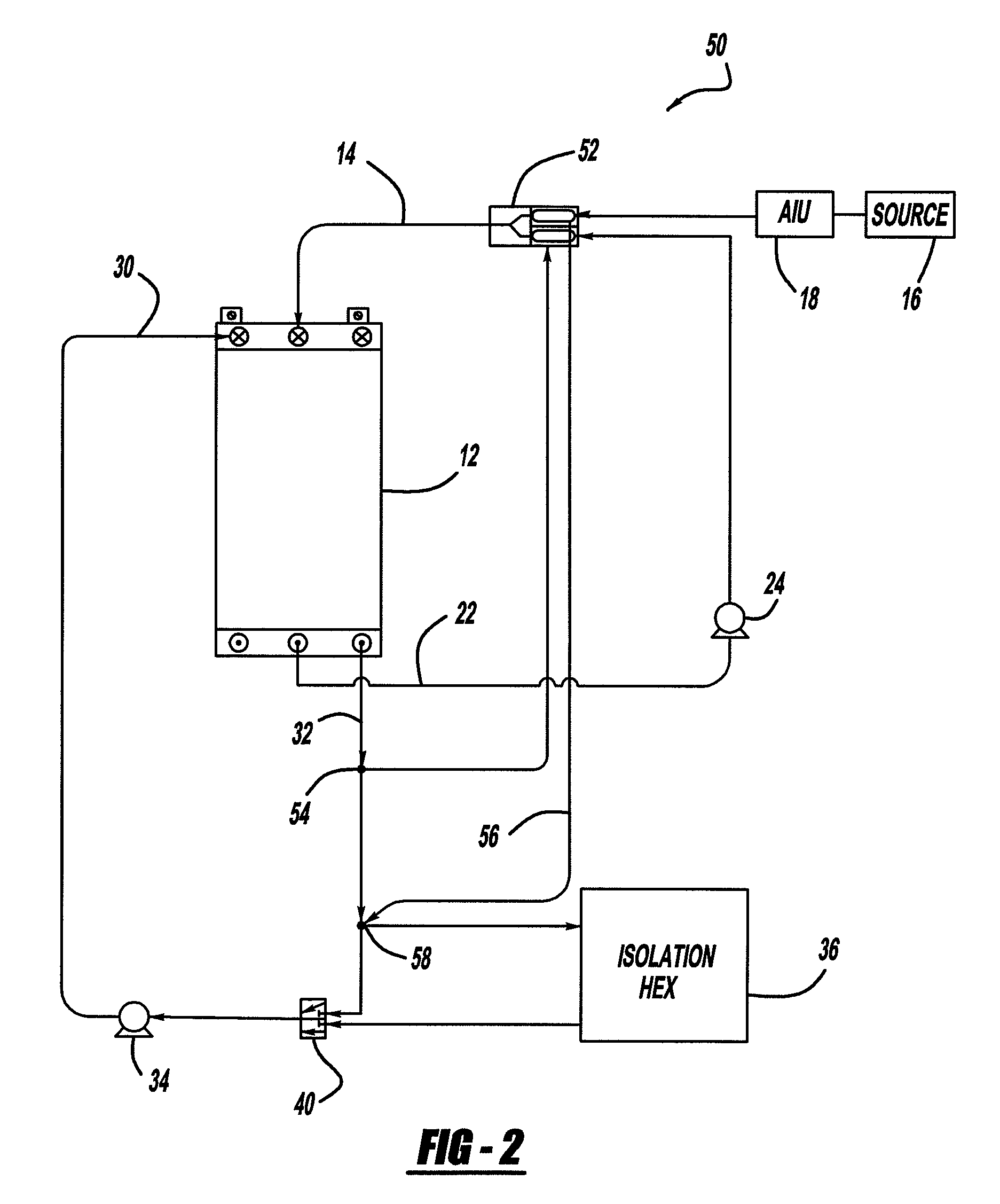System stability and performance improvement with anode heat exchanger plumbing and re-circulation rate
a heat exchanger and anode technology, applied in the field of fuel cell systems, can solve the problems of reducing the overall efficiency of the fuel cell, water accumulation within the fuel cell, and reducing the electricity produced by the fuel cell, so as to reduce the formation of water droplets, increase stack stability, and reduce the amount of liquid water droplets
- Summary
- Abstract
- Description
- Claims
- Application Information
AI Technical Summary
Benefits of technology
Problems solved by technology
Method used
Image
Examples
Embodiment Construction
[0014]The following discussion of the embodiments of the invention directed to a fuel cell system that uses heated cooling fluid to heat the anode input gas is merely exemplary in nature, and is in no way intended to limit the invention or its applications or uses.
[0015]FIG. 1 is a schematic diagram of a known fuel cell system 10 of the type discussed above. The cathode side of the system 10 is not shown for clarity purposes. The fuel cell system 10 includes a fuel cell stack 12 that receives a hydrogen reactant gas flow on line 14 from a hydrogen source 16, such as a compressed gas tank. The hydrogen gas from the source 16 is sent to an anode inlet unit (AIU) 18 that injects the hydrogen gas into the fuel cell stack 12 at the desired flow rate and pressure. In this design, anode exhaust gas is output from the stack 12 on line 22 and is re-circulated back to the input line 14 by a pump 24 to reclaim the un-reacted hydrogen. The anode exhaust gas from the fuel cell stack 12 is heated...
PUM
| Property | Measurement | Unit |
|---|---|---|
| temperature | aaaaa | aaaaa |
| cell voltage potential | aaaaa | aaaaa |
| stability | aaaaa | aaaaa |
Abstract
Description
Claims
Application Information
 Login to View More
Login to View More - R&D
- Intellectual Property
- Life Sciences
- Materials
- Tech Scout
- Unparalleled Data Quality
- Higher Quality Content
- 60% Fewer Hallucinations
Browse by: Latest US Patents, China's latest patents, Technical Efficacy Thesaurus, Application Domain, Technology Topic, Popular Technical Reports.
© 2025 PatSnap. All rights reserved.Legal|Privacy policy|Modern Slavery Act Transparency Statement|Sitemap|About US| Contact US: help@patsnap.com



